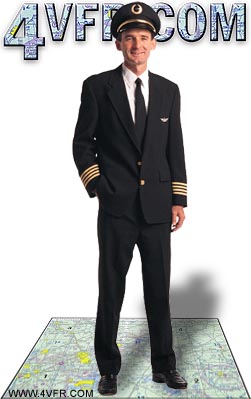 We Help You Pass
We Help You Pass
Our free online study guide really works. You can study for your FAA private pilot ground school exam right now. For more info about the 4VFR.COM project, click here. You can find a daily update log here.
Live ATC Audio Streams
Tune into live air traffic control frequencies from North America. This feature requires Real player. Start listening to ATC now!
Reference Library
Our glossary lists and databases have grown quickly. I am working to create an on-line reference library to tie together all the loose ends. You can check out what is currently available in the library
FAA Practice Exam - New!
Introducing our newly enhanced practice exam. Now with figures!. Take a test a day for a week, and I guarantee you will do better on your exam. Get Started Now!
Show your support for 4VFR.COM - Link us. Bookmark us. Tell your mother about us. Press CTRL-D to bookmark this site now!. Check out one of our proposed T-Shirt Designs.
Feature Article: Eights
Eights combine the skills acquired from doing left and right
turns about a point and S-turns. First find a + with one leg giving
a direct downwind entry. Proceed with a series of left and right
circles in which the downwind turns take you through the intersection.
Your primary effort will be to keep the circles the same size
and the altitude constant. Make your own diagram.
road
shallow turns
wind direction
road steep steep
entry turns turns
steep steep
turns turns
shallow turns


Last Modified October 22, ©2024 TAGE.COM

